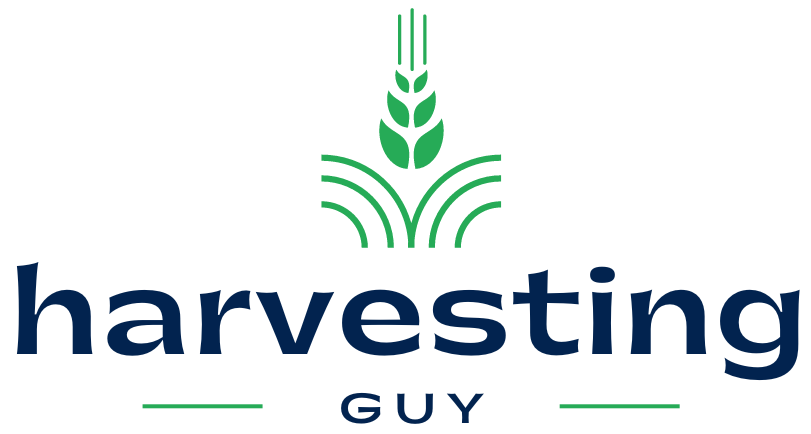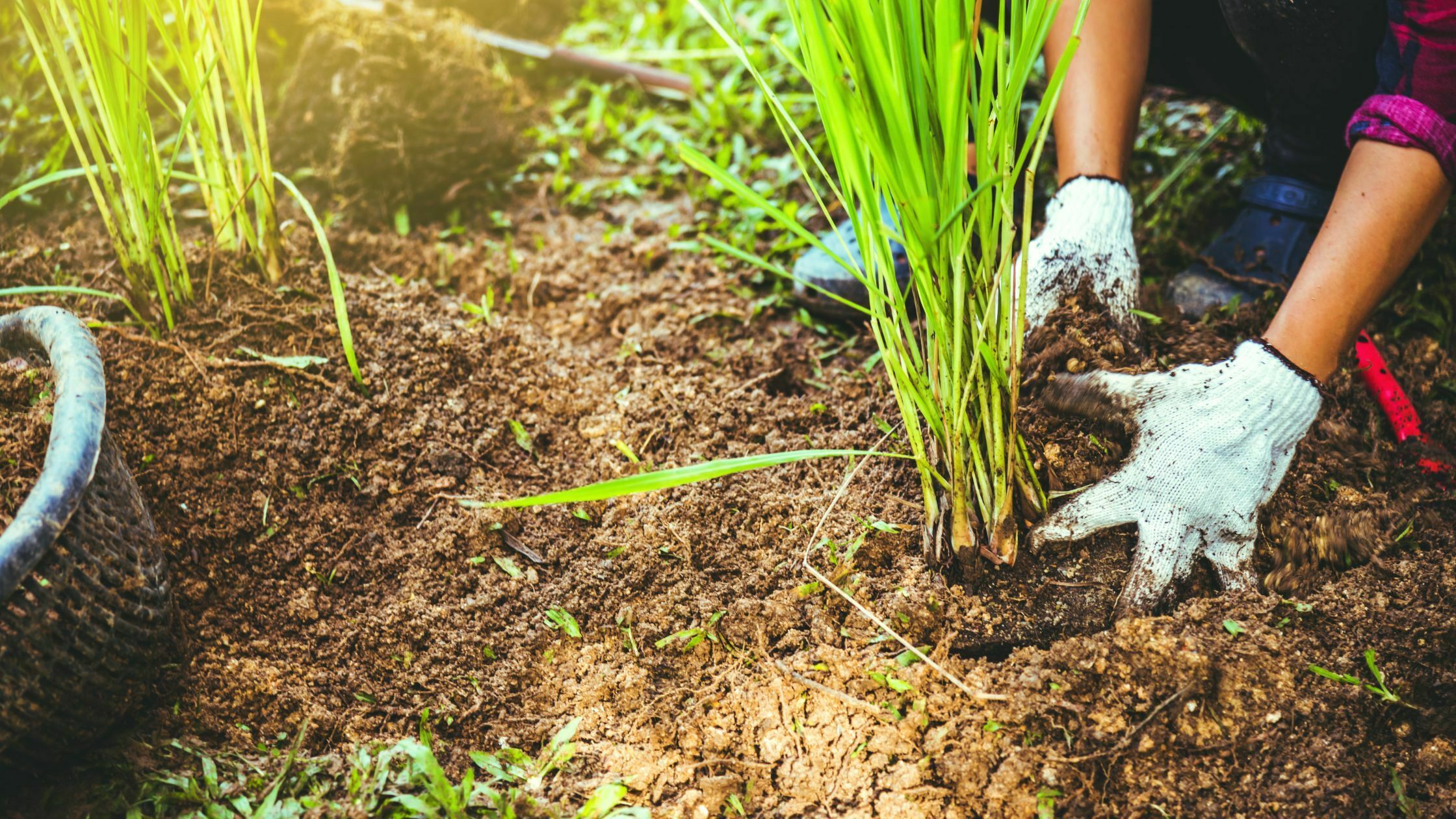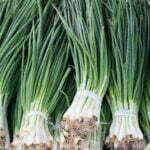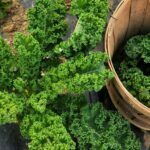Do you enjoy fragrant plants? Of all the aromatic plants and herbs, lemongrass is one of the oldest and most popular. So if you wish to cultivate fragrant plants, lemongrass is the right way. Learn everything you need to know about how to harvest lemongrass properly.
Lemongrass is a versatile and attractive plant; better yet, it is easy to grow in the right climate conditions. Lemongrass, which has a special place in the heart of gardeners, provides a wealth of delicious stalks to enjoy. It doesn’t matter if grown for ornamental or culinary use; knowing how to harvest lemongrass is a skill you won’t regret learning.
Though it may seem a little intimidating, especially if you are new to growing your own plants, you have nothing to worry about. Harvesting lemongrass is fairly simple. With the right guidelines, you’ll soon be a pro at how to harvest lemongrass.
How to Harvest Lemongrass
Tools
- Gardening gloves
- Herb scissors
Steps
- To prepare your harvested lemongrass, begin by cutting down the tough tops of the stalk until you have several inches of softer, lighter-colored plant matter near the base of the plant.
- The root fibers can also be trimmed though a few roots near the plant base can be retained to keep the stalk fresh in a glass of water.
- You can retain all portions of the stalk close together; stalks separated into individual blades can be cut.
- Once the harvested stalks have been trimmed, carefully rinse all dirt and grit from the surface and pat dry.
Recommended Product: Long Thorn Proof Gardening Gloves
[amazon box=”B078N3CWT5″ class=”lp-product-list” template=”vertical” image_size=”large” title=” ” image_alt=”alttexthere” description=”none” price=”none” button_text=”Check Latest Price” ]
100% natural premium pigskin leather gardening gloves ensure wear resistance &puncture resistance; rose pruning gloves keep your hands safe and blood-free from scratches.
Extended pigskin leather cuff protects hands and forearms from cuts and scratches, good coverage to just below the elbow, and long professional gauntlet rose to prune gloves, freeing you from roses painlessly.
Puncture-resistant padded palm and fingertips reinforced protection to your hands and gloves.
Features:
- Breathable
- Lightweight
- Puncture Resistant
Recommended Product: Herb Scissors Set
[amazon box=”B08D8HDJWS” class=”lp-product-list” template=”vertical” image_size=”large” title=” ” image_alt=”alttexthere” description=”none” price=”none” button_text=”Check Latest Price” ]
Now you can cut herbs on pizza, salad, casserole, and soup. For example, onion, coriander, parsley, rosemary, leek, celery, and other similar herbs. Cutting seaweed is also good.
Convenient to use in the kitchen, on the table, and even cookout. No more cleaning knives and cutting boards.
The kitchen scissors allow the left-handed or the right-handed to use them.
Features:
- High safety
- Ergonomic handle
- Stainless steel
Harvest Lemongrass End of season
- In colder regions where lemongrass is grown annually, harvest the remainder plant in the fall, before the first frost sets in.
- Cut the foliage down to the lighter-colored stalks
- Cut or break them off, discarding the roots and any discolored portions.
How do you know when lemongrass is ready to harvest?
You can begin harvesting lemongrass as soon as the plant is well-established enough to tolerate a few stalks being cut. Tender stalks can be gently snipped near the base, though longer, tougher stalks should be harvested together in clumps dug up and separated from the rest of the plant.
Does lemongrass grow back after harvesting?
Lemongrass tolerates frequent cutting for harvesting, although plants won’t grow as tall or full if you harvest often. You can cut back the stalks in summer as soon as they develop to a 1/2-inch thickness, or you can harvest once yearly in fall.
How do you pick lemongrass?
Choose stalks that feel firm, smell fragrant, and look fresh. Look for tight bulbs and pale to bright green stems and tops. The tops may be somewhat dry, but avoid any that appear overly dried out, brown, or yellow.
How do you harvest and preserve lemongrass?
- You can begin harvesting lemongrass as soon as the plant is well-established enough to tolerate a few stalks being cut. Tender stalks can be gently snipped near the base, though longer, tougher stalks should be harvested together in clumps dug up and separated from the rest of the plant.
- Prepared stalks can be stored in the produce drawer of your refrigerator for one to two weeks. The taller grass-like portions of the plant can be added to vases of flowers for a dramatic and lightly fragrant addition.
- You can also freeze your lemongrass harvest to preserve it for future use. To do this, take the rinsed, dried prepared stalks and use a sharp knife to cut the stalk into slices 1/4 to 1/2 inch thick. Collect these round slices into a freezer bag and freeze. Your lemongrass will remain fresh-tasting for up to a year.
Recommended Product: Ziploc Freezer Bags
[amazon box=”B00CQAHOCO” class=”lp-product-list” template=”vertical” image_size=”large” title=” ” image_alt=”alttexthere” description=”none” price=”none” button_text=”Check Latest Price” ]
Get unbeatable freezer protection with new Grip ‘n Seal technology. These bags also offer a triple system seal with an extended tab, a new, easy-grip texture, and a double zipper.
Grip ‘n Seal technology provides unbeatable freezer protection from freezer burn, which helps reduce food waste.
Ziploc brand Freezer Bags for food storage are made of durable and long-lasting BPA-free plastic.
Features:
- BPA free
- Smart Zip
- Grip ‘n Seal technology
How to dry lemongrass?
- Drying lemongrass is another way to preserve it. To dry the stalks or leaves, cut them into pieces while the plant is still fresh, as they can become crumbly and difficult to cut when dry.
- Separate the stalks’ leaves and lay them on paper towels or a screen in a dry area from the direct sun.
- When completely dry, store in a jar in a cool, dark place. Dried lemongrass can be used for up to a year.
Recommended Product: Brawny Tear-A-Square Paper Towels
[amazon box=”B07MB9XLW9″ class=”lp-product-list” template=”vertical” image_size=”large” title=” ” image_alt=”alttexthere” description=”none” price=”none” button_text=”Check Latest Price” ]
Brawny Tear-A-Square paper towels all feature the same strength and durability you’ve expected from Brawny.
Gone is the guilt of using a full or half-sheet paper towel when only a quarter sheet is needed. Use Brawny Tear-A-Square as a coaster or napkin for quick clean-ups or to wipe up small spills.
Features:
- Durability
- Strong
- Absorbent
How to use lemongrass in the kitchen?
- Lemongrass tea: This is the perfect way to use the lemongrass plant parts that are not flavorful enough for cooking. Steep a few pieces (cut into 1- or 2-inch lengths) of the fresh or dried leaves and/or outer woody stalks in a cup of boiling water for 5 minutes or longer if you desire a stronger brew. Add honey or sugar to taste. Lemongrass tea is delicious hot or iced.
- Ginger substitute: Substituting lemongrass for ginger will produce a milder flavor profile for any dish.
- Salad topping or garnish: Mince the more tender pieces of the stalk for this purpose.
- Lemon juice substitute: Lemongrass can be used in cream sauces instead of lemon juice without the risk of the sauce curdling.
- Seasoning for broths, sauces, and other dishes: Lemongrass stalks or leaves can be added to any dish that a mild, lemony flavor would enhance. Use it the way a bay leaf would be used, and remove it before serving.
Additional Tips on How to Harvest Lemongrass
- It’s generally recommended that stalks are at least a half-inch thick before you snip.
- The easiest harvesting method is to pick whole stems and separate the leaves and the stalks afterward.
- If you want some of the leaves to use, give your plants a haircut by trimming them with sharp scissors or garden snips.
- When harvesting lemongrass, be aware that the leaves are very sharp and can give you a bad paper cut case.
- Lemongrass is very sensitive to frost; it is highly advised to make a final end-of-season harvest before the cold weather hits.



